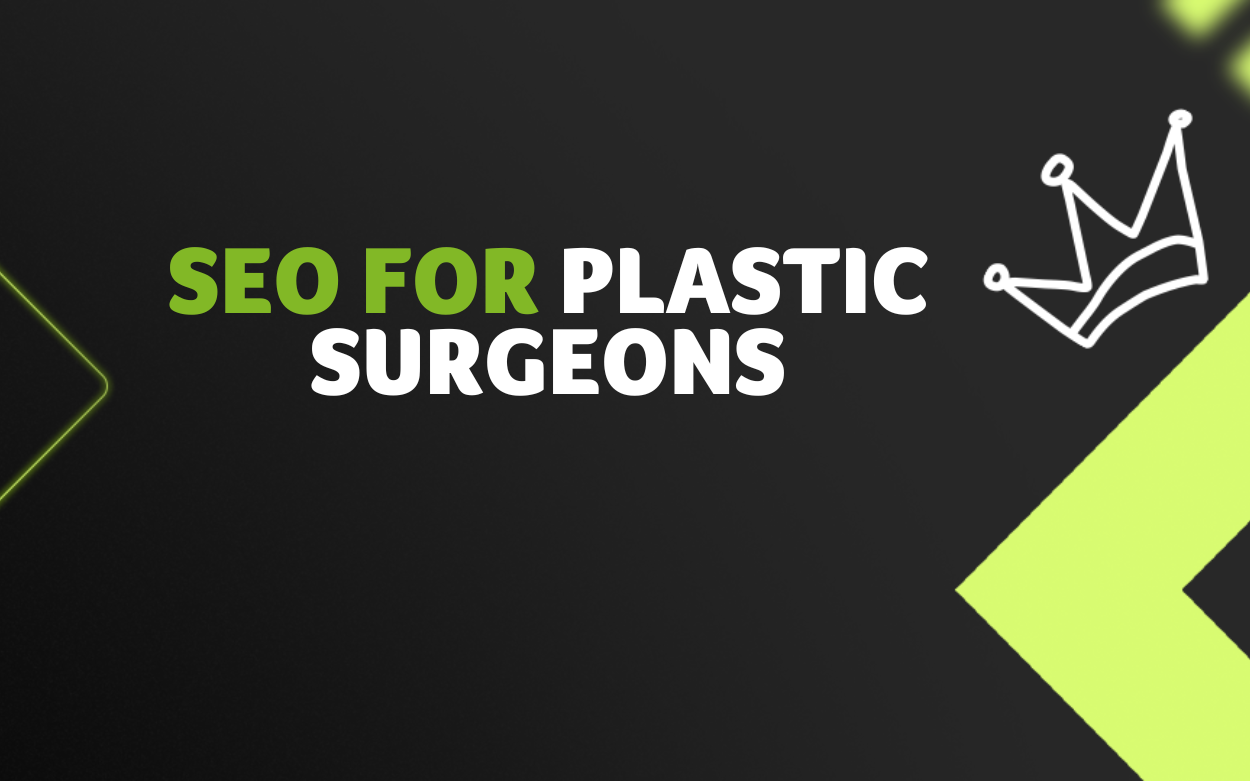
In today’s digital-first world, a strong online presence isn’t just a luxury—it’s a necessity for plastic surgeons.
According to recent studies, over 77% of patients begin their search for healthcare services online, and 60% of those searches result in a booked appointment with a provider whose website ranked on the first page of Google.
Search engine optimization (SEO) enables plastic surgeons to capture a portion of these online leads.
By leveraging the right techniques, your practice can achieve higher visibility, attract the right audience, and establish trust as a leader in your field.
This guide walks you through everything you need to know about SEO for plastic surgeons, from optimizing your website to building local authority and tracking your results.
Whether you’re just starting or looking to enhance your existing plastic surgery SEO strategy, these actionable tips will help you stand out in a competitive market.
SEO for Plastic Surgeons: The Basics
Search engine optimization (SEO) is the process of improving your website to help it rank higher on search engines like Google.
When someone searches for terms like “best plastic surgeon near me” or “facelift recovery tips,” search engines decide which websites to show first.
The higher your website appears in search results, the more likely people are to click on it and learn about your services.
Think of SEO as a way to make your website more attractive and trustworthy to both search engines and potential plastic surgery patients.
SEO mainly involves ensuring your website provides high-quality, relevant information, is easy to navigate, and meets specific technical standards that search engines favor.
The four main areas of SEO are:
- Content: Creating helpful, patient-focused information about your services.
- Authority: When credible online sources publish links to your website it gains trust amongst users and search engines.
- On-page optimization: Helping search engines and users understand what your website and its content are about.
- Technical optimization: Ensuring your website is fast, mobile-friendly, and error-free.
When done correctly, SEO helps you stand out from competitors, attract the right audience, and ultimately grow your practice.
Your Money or Your Life is critical for plastic surgeon SEO
Google categorizes queries related to a user’s health, finances, or safety, as Your Money or Your Life (YMYL) topics.
Plastic surgery websites fall under this category because the decisions patients make based on your content can significantly impact their physical health and well-being.
To ensure that YMYL content is accurate, helpful, and safe, Google prioritizes websites that demonstrate experience, expertise, authoritativeness, and trustworthiness (EEAT).
This framework helps Google evaluate the quality of a site. Therefore, plastic surgeons must meet these standards if they want to rank higher.
Here’s what each component means and why it matters:
🔎 Experience: This focuses on showing firsthand knowledge. For plastic surgeons, this might mean including patient testimonials, before-and-after galleries, or personal insights into procedures.
🔎 Expertise: Google values content created by qualified experts. Highlight your credentials prominently on your website and in your content to reassure visitors that they’re in capable hands.
🔎 Authoritativeness: This reflects your reputation in the field. Getting backlinks from respected medical organizations, industry publications, and local directories can boost your perceived authority.
🔎 Trustworthiness: Plastic surgery patients need to feel safe sharing personal information and trusting your services. Ensure your website has secure HTTPS protocols, accurate contact information, and privacy policies.
For plastic surgeons, implementing E-E-A-T isn’t just about better rankings—it’s about helping potential patients feel confident in their decision to choose your practice.
Why SEO Matters for Plastic Surgeons
Now you know what SEO for plastic surgeons is, let’s look at some of the ways it can benefit your business.
Patients search online for plastic surgery services
The first place most people turn to when considering plastic surgery is the internet. They might search for terms like “best plastic surgeon near me,” “facelift recovery tips,” or “how much does rhinoplasty cost?”
Search engines are their go-to resource for researching procedures, comparing surgeons, and reading reviews.
A study by BrightEdge found that 68% of all online experiences begin with a search engine, and the majority of clicks go to the top-ranking results.
According to SEO tool Ahrefs, around 42,000 people search for the term “plastic surgery” every month in the United States. And that’s just one term—the total number of people searching for these services is likely to be far higher.
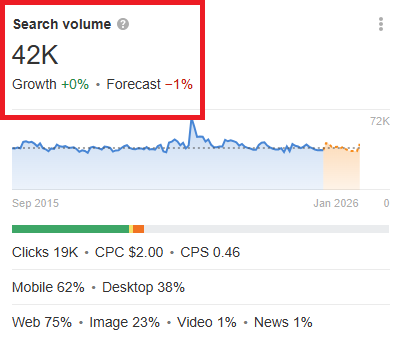
SEO is the tool that helps you connect with these patients at the exact moment they’re searching for what you offer. If your practice doesn’t appear prominently in search engine results pages (SERPs), you’re missing out on a significant number of potential patients.
| 💡 What is Ahrefs?
Ahrefs is an SEO tool that helps you improve your website’s search engine performance. It provides insights into keyword research, backlinks, and competitor analysis. With Ahrefs, you can discover relevant keywords, evaluate their ranking difficulty, and understand how competitors are performing. We use it in our examples throughout this article. However, other SEO tools like Semrush, Moz and Majestic are available and provide similar data. |
SEO helps build trust and credibility
Ranking high in search results doesn’t just bring visibility—it also builds trust. Patients often perceive the top results as the most reliable, assuming Google has “vetted” these websites.
This perception is even more critical for plastic surgeons, given the high-stakes nature of your services.
A well-optimized website that adheres to SEO best practices signals to Google and patients alike that your practice is trustworthy and professional.
Competing in a competitive industry
The plastic surgery industry is highly competitive, with many practitioners vying for the same patients.
Whether you’re in a major metropolitan area or a smaller city, standing out among other surgeons can be a challenge.
SEO provides a cost-effective way to outshine competitors by targeting specific keywords, showcasing your expertise, and leveraging content that answers patient questions.
By investing in SEO, you position your practice as a leader in your area and make it more likely that potential patients will find you before your competitors.
8 Steps to Boost Your Plastic Surgery SEO
Ready to rank higher on Google? This section provides actionable tips plastic surgeons can use to improve their SEO.
1. Keyword research for plastic surgeons
Keyword research is the process of identifying the search terms that potential patients use when looking for plastic surgery services.
It involves understanding which keywords are relevant to your practice, how often they’re searched, and how competitive they are.
Effective keyword research informs your content strategy, guiding you on what pages to optimize, as well as helping you identify areas where you may need to expand or improve existing content.
This ensures your website targets the right terms to appear when prospective patients search for services like yours.
Understanding search intent
Search intent involves understanding what a user wants to achieve when typing a query.
For example, patients might be:
- Looking for information
- Comparing options
- Ready to book a procedure
Search intent can be split into two main categories—commercial and informational.
- An example of an informational keyword might be: “How does breast augmentation work?” – This type of query is typically answered with blog content or informational pages.
- An example of a commercial keyword could be: “Breast augmentation surgeon near me” – This search is driven by the intent to find a plastic surgeon to perform the procedure, making it a prime keyword for service pages.
Google often knows the type of content that fulfills these user needs and shows users pages that it thinks will match it.
For example, if someone is ready to book a procedure, then they might want contact details, information on pricing and details on the process.
Understanding search intent helps you craft content that directly addresses people’s needs.
Finding the right keywords for your practice
Here’s how to develop a list of keywords that you can add to your website and create content around.
- List seed keywords
Start by brainstorming broad keywords that are relevant to your services. Examples might include:
- Breast augmentation
- Liposuction
- Facelift
These broad terms are your “seed” keywords—because they are general, they get a lot of traffic. However, they are also difficult to rank for because so many websites are competing for them.
2. Find long-tail keywords
Next, find long-tail keywords; these are longer, more specific phrases. Because they are more specific, they usually get less search traffic but are often more targeted and easier to rank for.
For instance, if you specialize in more affordable facelifts for patients in a certain area, you might try to rank for “affordable facelift surgeon in [city].”
One way to discover these keywords is by using Ahrefs. Click “Keywords Explorer” in Ahrefs’ top menu and enter a seed keyword when prompted. Click “Search”.
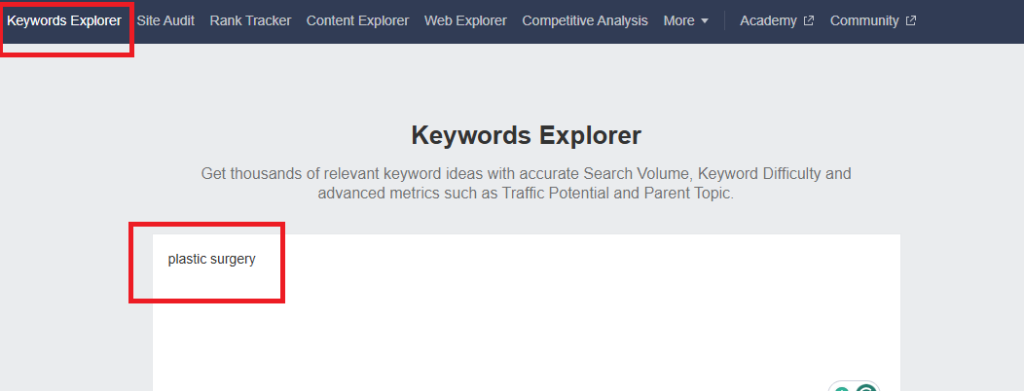
You’ll be shown a keyword report. Scroll down to the “Keyword ideas” section. Here you’ll find four types of keyword ideas:
- Term matches: Keywords that contain your target seed keyword.
- Questions: Phrases related to your keyword, e.g., “What is the best age for a facelift?”
- Also rank for: Keywords the pages ranking for your target term also rank for.
- SERP overview: This shows the top-ranking pages for your keyword, giving insight into keyword competition.
You’ll also see the search volume (number of monthly searches in your country) for each.
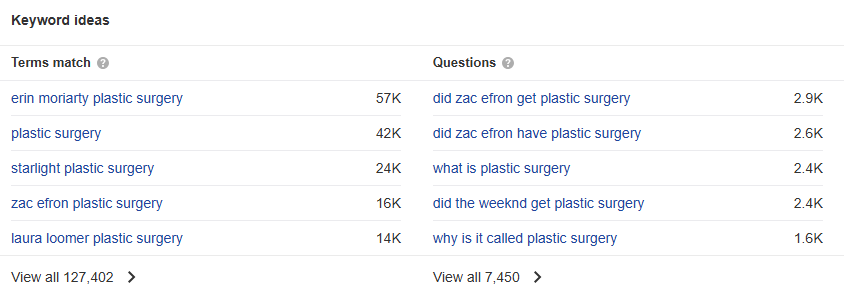
Add your keywords to a spreadsheet as you go.
3. Filter your keywords
Once you’ve gathered 30-100 potential keywords, it’s time to decide which ones represent the best opportunities.
The goal is to find keywords with high traffic but lower ranking difficulty. You can do this by examining each term in the Ahrefs Keywords Explorer.
In the keyword reports look for:
- Search volume: The number of monthly searches.
- Keyword difficulty: How hard it is to rank for a keyword.
Add these metrics to your spreadsheet. Once you have added them all, prioritize them and try to find keywords you think look like a good opportunity.
2. Creating helpful blog content
Now you have a list of keywords you can use to guide your website and blog content.
Creating high-quality content that targets these keywords and that your users will find genuinely valuable will attract more relevant traffic and boost your brand.
Some examples of content you can produce include:
- Procedure explanations: Write detailed articles explaining common procedures like rhinoplasty, breast augmentation, or liposuction. Example: “What to Expect from a Rhinoplasty Surgery.”
- Before-and-after guides: Showcase results of procedures with keywords like “before-and-after rhinoplasty” to directly address search queries.
- Frequently asked questions (FAQs): Create blog posts or FAQ pages answering common questions, such as “How long is recovery after liposuction?”
- Patient success stories: Share real patient testimonials and use keywords like “successful breast augmentation surgery in [city].”
- Myths vs. facts: Debunk misconceptions about plastic surgery. Example: “Myths About Breast Implants You Need to Stop Believing.”
- Health and wellness tips: For example, you could share tips for maintaining healthy skin post-procedure.
By aligning content with prioritized keywords, you ensure your website answers patient questions, increasing your chances of ranking and building trust.
Here’s a great example of high-quality content from Sadrian MD. The company has written a guide to “Ozempic face”. This is a common side effect of the hugely popular weight loss drug.
Many people will likely be looking for solutions to this problem, and this article helps to show Sadrian MD’s expertise on the subject and the solutions it can provide.
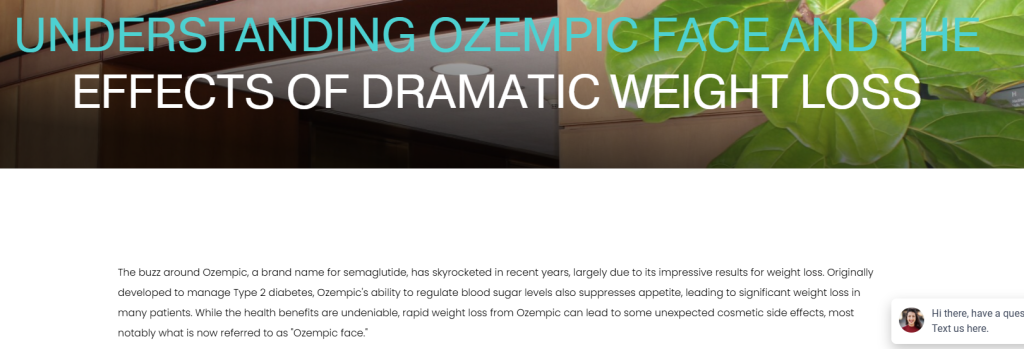
3. Create service pages
Blogs are great for ranking for informational keywords. However, service pages are more effective for commercial keywords.
A good service page includes details on your procedures, expertise, and how patients can take the next step in booking a consultation or surgery.
Service pages also aim to convert website visitors into patients.
Effective service pages include:
✔️ Clear calls to action (CTAs): Every service page should have a prominent CTA encouraging potential patients to act. Examples include “Book your consultation today” or “Contact us for more information on [procedure].” Ensure the CTAs stand out and are easy to find.
✔️ Showcase your services: Describe your procedures in detail, including what the procedure involves, potential benefits, recovery expectations, and risks. Highlight your qualifications, results, and certifications, using before-and-after photos, testimonials, and awards to set you apart.
✔️ An overview of the service or procedure: This helps the patient understand what they are buying. Include benefits to help convince them to buy your services, and explain the process in steps so they know what to expect.
✔️ Patient testimonials: Include quotes or videos from satisfied patients who have undergone the procedure. This shows your experience and improves patient trust.
Golden Triangle Plastic Surgery’s services pages include before and after photos with patient testimonials. They have also included YouTube videos of their surgeons appearing as experts on television.
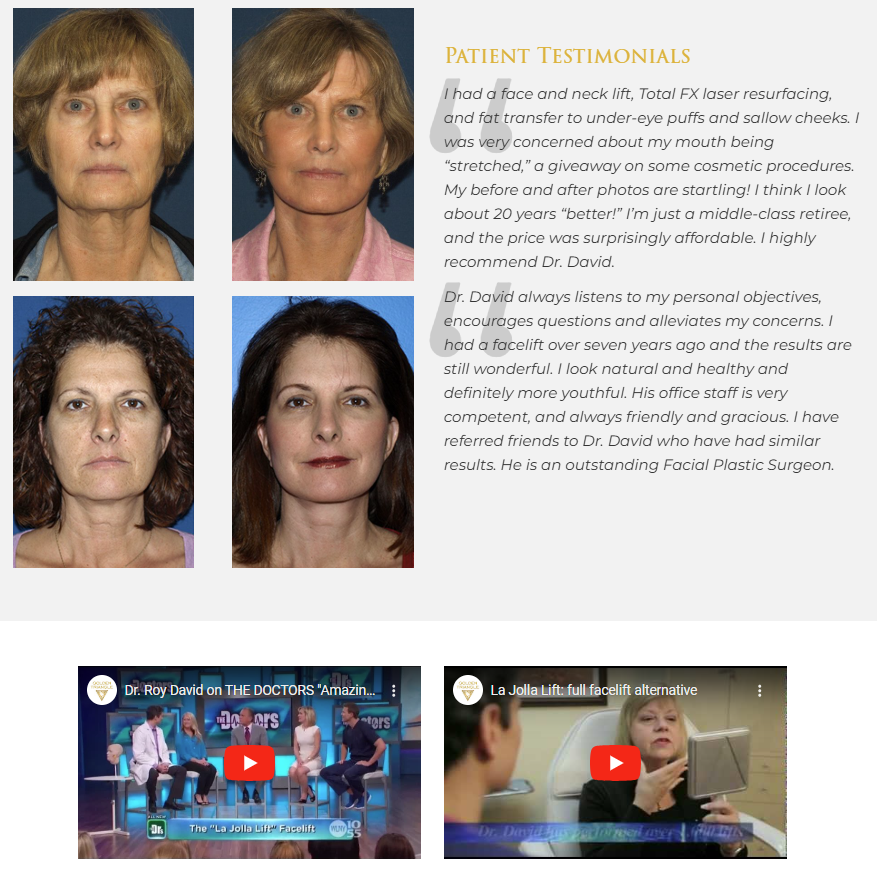
4. On-page optimization
On-page optimization mainly involves adding information and keywords to parts of a webpage.
Here are some of the practices that will help you improve your on-page plastic surgery SEO:
- Title tags: The clickable headline in search results. Keep it under 60 characters, include your primary keyword (e.g., “Rhinoplasty Surgeon in [City]”), and make it compelling. Each page should have a unique title.

- Meta descriptions: A brief summary below the title. Though it doesn’t directly impact rankings, a well-crafted meta description can improve click-through rates. Keep it under 160 characters, include the target keyword, and add a call to action.

- Header Tags (H1, H2, H3, etc.): Organize content with headers to make it scannable. Use one H1 per page with the primary keyword, and H2/H3 tags for subheadings.
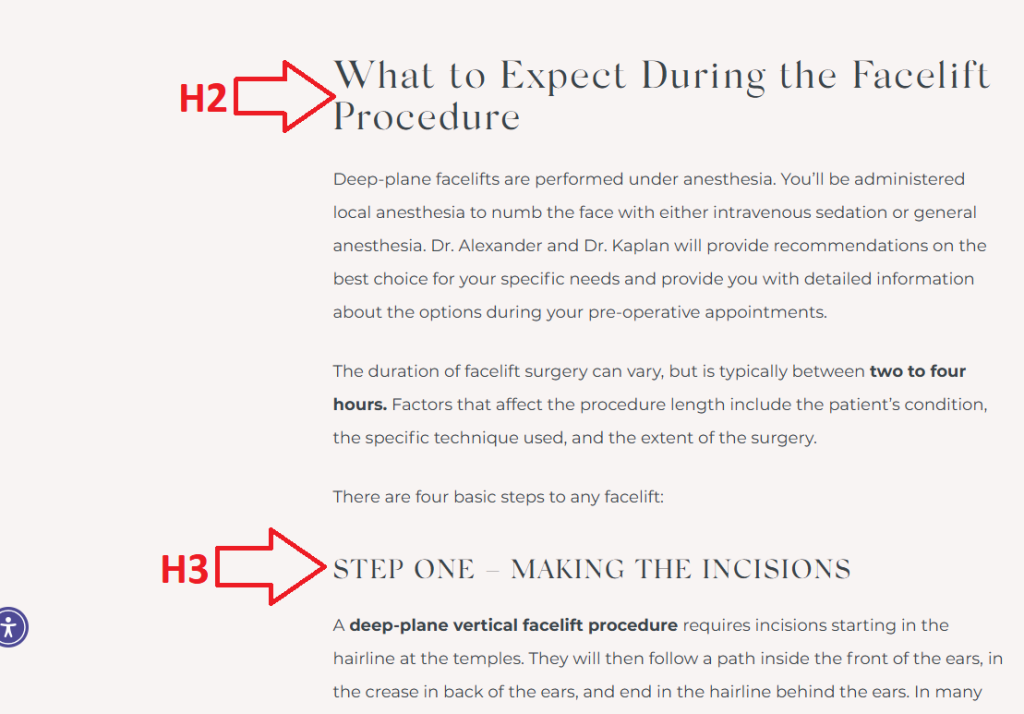
- URL structure: Keep URLs short, descriptive, and keyword-rich (e.g., www.yoursite.com/rhinoplasty-in-[city]).
- Image alt text: Alt text, or alternative text, is a brief description of an image used to improve accessibility for visually impaired users and help search engines understand the content of the image. Add descriptive, keyword-relevant alt text to images for accessibility and SEO. Avoid keyword stuffing, and use alt text to describe results like “breast augmentation before and after photos.”
- Internal linking: Link to other relevant pages, such as service pages or blogs, using descriptive anchor text (e.g., “learn more about tummy tuck surgery”).
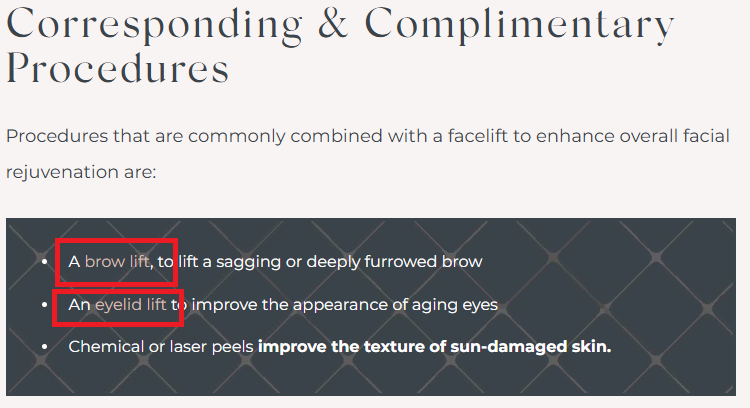
5. Link building for plastic surgeons: Building authority and trust
Link building is the process of getting other websites to publish hyperlinks that point to your domain. This is critical for improving search engine rankings.
Search engines use links to measure authority and trustworthiness, so quality links from health websites, medical directories, and local organizations help plastic surgeons improve EEAT, boost search rankings and increase traffic.
Here are some common link building techniques for plastic surgeons:
Outreach: Connecting with relevant websites
Once you have some quality content published on your website, you can improve your authority by asking other website owners to link to it.
This process is called outreach and it is one of the most effective link-building strategies.
Here’s how to do it step-by-step:
Step 1: Find relevant websites
Look for websites related to your industry and location. These could be:
- Medical blogs: Focus on authoritative sites that cover health, beauty, or plastic surgery topics.
- Medical publications: Reputable online medical journals or publications that accept guest contributions.
- Health and wellness sites: Reputable health organizations, online magazines, or local lifestyle blogs.
- Social media influencers: Individuals who review or discuss aesthetic procedures.
- Local news websites: Platforms covering community events or expert opinions.
Step 2: Craft your outreach email
Personalize your message when contacting website owners. Introduce yourself and explain why linking to your content or featuring your practice would benefit their audience. Be clear about how your content adds value to their site.
Step 3: Follow up
If you don’t get a response after a week or two, follow up politely. Keep the tone friendly and emphasize the mutual benefit of the link.
Guest posting for plastic surgeons
Guest posting is the practice of creating and publishing content on someone else’s website or blog to reach a broader audience, build authority, and earn backlinks to your own site.
In the example below the owner of Alamo Plastic Surgery has written an article for White Coat Investor about how to start a medical practice. Although this isn’t aimed at patients, it still shows her expertise in the sector.
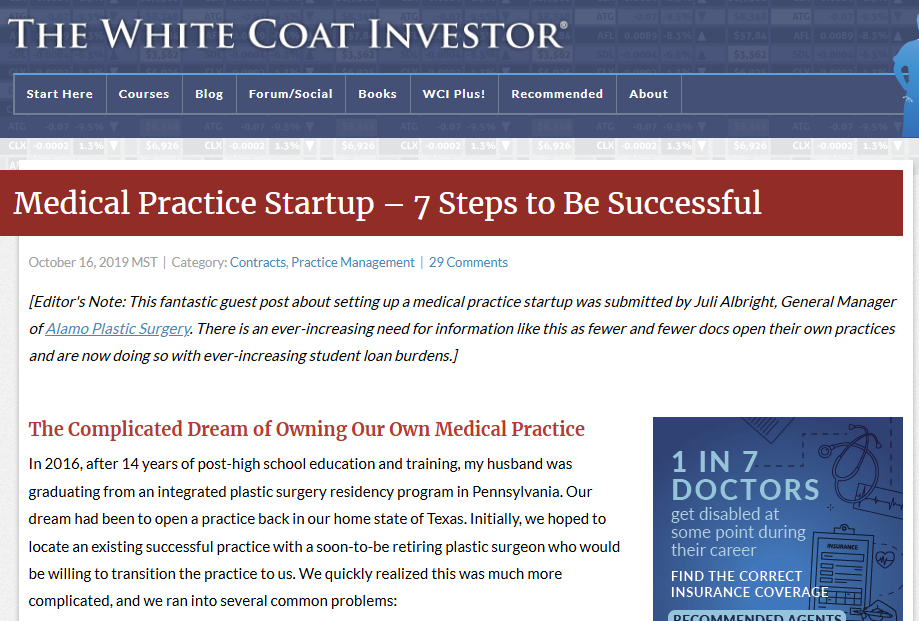
Here’s how you can build similar links for your practice:
Step 1: Identify guest post opportunities
Look for websites relevant to your practice, such as health blogs, local lifestyle sites, or beauty-related publications. Use tools like Ahrefs to find sites with good domain authority that accept guest posts.
Step 2: Pitch valuable content
When reaching out to website owners, offer content ideas that align with their audience’s interests. For example, topics like “How to Choose the Right Plastic Surgeon” or “Top Considerations Before Rhinoplasty” can be appealing. Highlight your expertise and why your content will benefit their readers.
Step 3: Write quality content
Once your pitch is accepted, write an informative and engaging post. Be sure to subtly link back to your services, ensuring that your content is valuable without sounding overly promotional.
Building local links through community involvement
Community involvement is an excellent strategy to earn valuable local backlinks.
Here are a few ideas:
- Sponsor local events: Sponsor community events, charity functions, or health-related workshops. These events often feature a list of sponsors on their websites, providing a local backlink.
- Build partnerships with local businesses: Team up with other local businesses, such as fitness centers, spas, or wellness centers. A mutual partnership can lead to featured mentions on each other’s websites with backlinks.
- Appear in local media features: Offer to contribute to local news websites or magazines as an expert on plastic surgery topics. These features often come with backlinks to your practice.
These local links not only help with plastic surgery SEO but also build trust and visibility within your community.
In the example below, a Miami-based plastic surgeon got tons of coverage when he offered free plastic surgery to three moms on Mothers’ Day.
The CBS news article below included a backlink to the surgeon’s website.
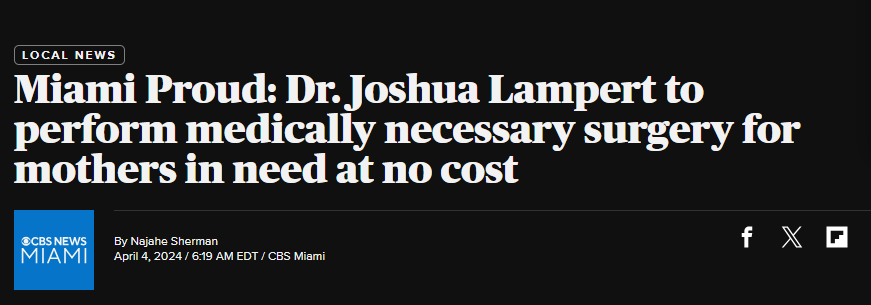
Leveraging testimonials and reviews for link opportunities
Patient reviews and testimonials can be powerful for link-building. Many review platforms like Google My Business, Yelp, and Healthgrades allow patients to leave reviews, and often link to your website.
Encourage happy patients to share their experiences on these platforms, and feature testimonials on your own site to increase the likelihood of being linked to by other reputable sources, boosting both trust and SEO.
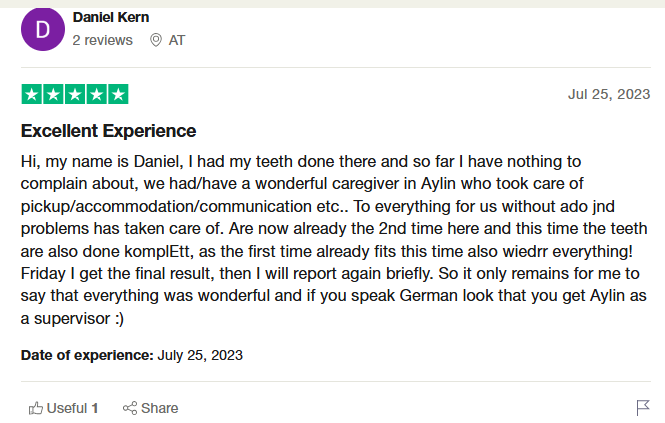
Appearing in directories also helps improve your practice’s visibility and credibility.
Ensure that your listings are complete, accurate, and consistent across platforms, as this can improve local SEO and search rankings.
Being featured on high-authority directories increases your online trustworthiness and helps potential patients find your practice more easily.
Implementing a link insertions strategy — adding your site’s link to existing high-quality content via outreach — can further strengthen your backlink profile.
6. Local SEO: What you need to know
Local search is when the user is looking for services geographically nearby. Examples may include:
- Facelift surgery near me
- Facelift surgeon San Diego
When you perform a local search, the results are tailored to your area.
Here’s what it looks like:

Local plastic surgery SEO is when you optimize your online presence so you appear in these local results. As you can see in the image below, Google Maps plays a pivotal role in local results.
The only way your practice will appear on Google Maps is if you have a Google Business Profile (formerly Google My Business).
The following section explains how you can set this up.
Claiming and optimizing your Google Business Profile
Claiming and optimizing your Google Business Profile lets you control how your practice appears in search results and on Google Maps. Best of all, it’s completely free.
First, visit the Google Business Profile homepage and sign in using your business Gmail account.
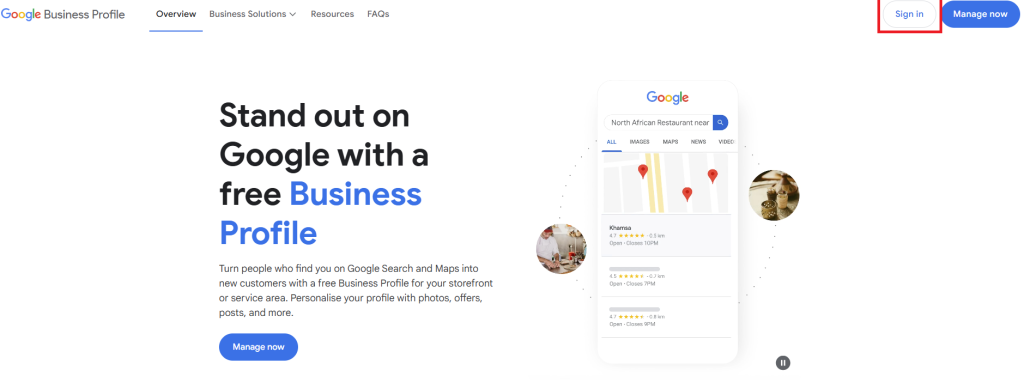
Next, click “Manage now” and fill in the requested business details.

You’ll then be sent a business verification postcard with a verification code on it. This is to verify the address you provided.
Once verified, complete all business information accurately, including your:
- Practice name
- Address
- Phone number
- Opening hours
- List of services
Add high-quality photos of your office and staff, and regularly post updates to keep your listing active.

The role of online directories and citations
Online directories aren’t just helpful for link building—they also play a key role in improving your local SEO. They list important details about your practice and help search engines verify your location and services.
Consistency is key: ensure your practice’s name, address, and phone number (NAP) are accurate across all listings. Having consistent information boosts your credibility and makes it easier for search engines to rank you in local results.
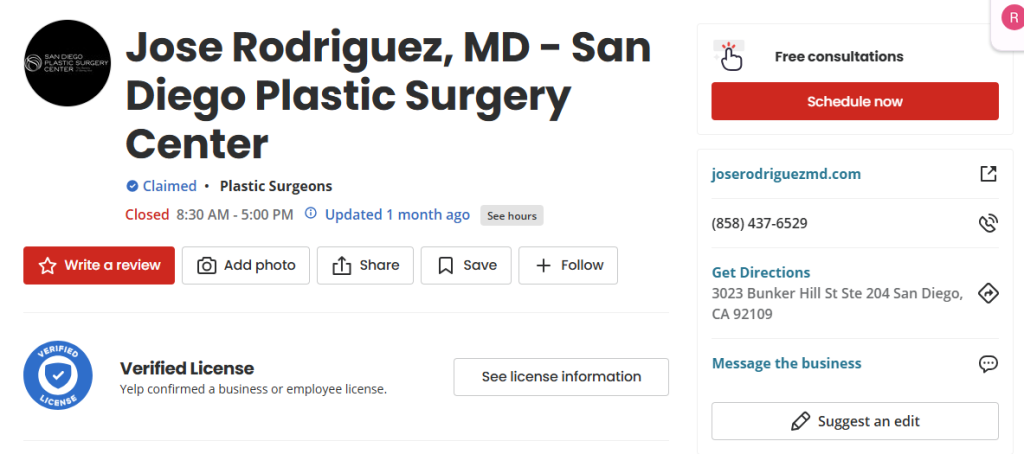
Encouraging and managing local patient reviews
Positive reviews on platforms like Google, Yelp, and Healthgrades can help improve local rankings and build trust with potential patients.
Encourage satisfied patients to leave reviews and respond to them to show you value feedback.
7. Technical SEO: The foundation of a strong website
Technical SEO refers to the optimization of the technical aspects of your website to ensure it meets search engine requirements and offers the best user experience. While it’s less visible than on-page SEO (like keywords and content), technical SEO plays a critical role in improving your site’s rankings and ensuring it’s accessible to both search engines and potential patients.
What is technical SEO?
Technical SEO involves optimizing the behind-the-scenes aspects of your website to make it easier for search engines to crawl, index, and rank your pages.
It covers things like ensuring your site loads quickly, is mobile-friendly, secure, and includes structured data to help search engines understand the content better.
Proper technical SEO is essential for ranking well in search results and ensuring potential patients can easily find and navigate your site.
Here are some critical technical SEO factors for plastic surgery websites:
🌐 Mobile usability: With most searches happening on mobile devices, having a mobile-friendly site is crucial. Ensure your website is responsive, meaning it automatically adjusts for smartphones and tablets. Google prioritizes mobile-friendly websites in search rankings. Google Search Console’s Core Web Vitals section includes a tool to monitor mobile friendliness.
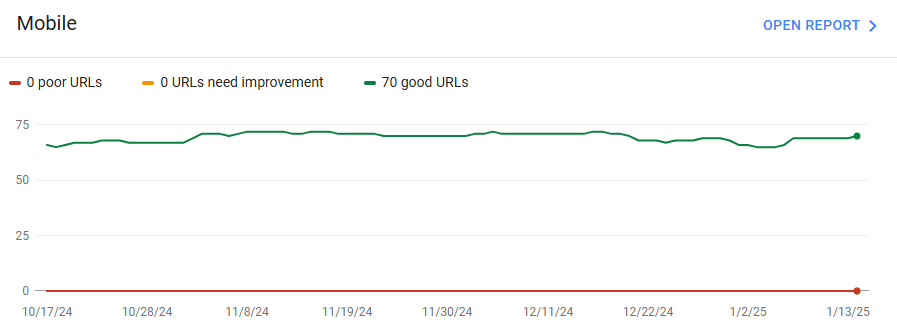
🌐 Site speed: A slow website can drive potential patients away. Aim for a fast loading time by optimizing images, using caching, and minimizing unnecessary code. Tools like Google PageSpeed Insights can help identify issues slowing your site down.
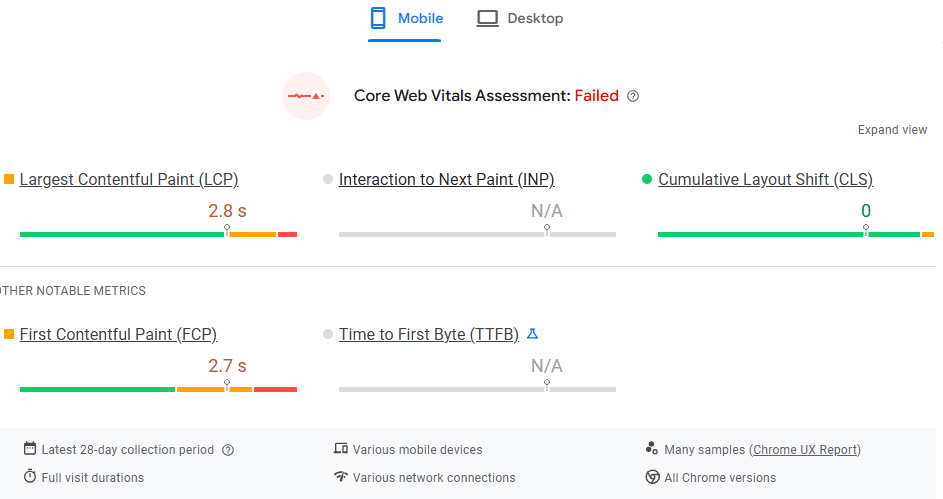
🌐 Secure HTTPS: Having an HTTPS-secured site ensures your website is encrypted, providing a secure connection for visitors. Google also uses HTTPS as a ranking factor, so securing your site boosts both trust and SEO.
🌐 Structured data: Structured data helps search engines understand your content by providing extra context. For example, you can use schema markup to tell Google the difference between your services, ratings, and contact details.
8. Tracking your results: How to measure SEO success
Measuring the success of your SEO efforts is essential to understanding what’s working and where you need to improve.
With the right tools and metrics, you can track how well your plastic surgery website is performing and make data-driven decisions to further optimize your online presence.
Tools to monitor your website’s performance
There are several tools available to help you track your website’s SEO performance. Two of the most important are Google Analytics and Google Search Console:
- Google Analytics: This free tool tracks user behavior on your website, including which pages they visit, how long they stay, and whether they complete desired actions (like booking a consultation). It’s essential for understanding traffic sources, user demographics, and conversion tracking.
- Google Search Console: This tool helps you monitor your site’s presence in Google search results. It provides valuable insights into which keywords your site ranks for, the impressions your pages get, and which pages are being indexed. It also alerts you to any issues affecting your site’s visibility in search results.
Key metrics to track
SEO key metrics are performance indicators that help you evaluate how well your website is performing in search engines and how effectively your SEO efforts are driving results.
- These metrics give you insight into:
- Whether you’re attracting the right traffic
- How you can improve your rankings
- How you can convert visitors into potential patients.
Key metrics typically include:
- Organic traffic: The amount of traffic coming from search engines. An increase in organic traffic indicates that your SEO efforts are paying off and that your website is ranking for relevant keywords.
- Keyword rankings: Keep an eye on the rankings of the keywords you’re targeting. If you’re seeing improvements, it means your optimization efforts are effective and your practice is becoming more visible in search.
- Conversions: The ultimate goal of SEO is to convert visitors into patients. Track metrics like form submissions, appointment bookings, or phone calls to measure how well your website is turning traffic into leads.
Elevate Your Practice with Effective SEO Strategies
Mastering SEO is a powerful way for plastic surgeons to attract more patients, increase online visibility, and stay competitive.
By leveraging strategies like keyword research, on-page and technical optimization, local SEO, and building authority through quality content and backlinks, you can position your practice as a trusted leader in your field.
However, SEO is an ongoing process that requires expertise, consistency, and adaptability to achieve long-term success.
At Authority Builders, we specialize in crafting tailored SEO solutions that drive measurable results for plastic surgeons.
With our experience in link-building, content strategies, and search engine optimization, we can help your practice reach new heights.
Ready to transform your online presence and attract more patients? Book a call with Authority Builders today and discover how our expertise can help you dominate your local market and grow.
